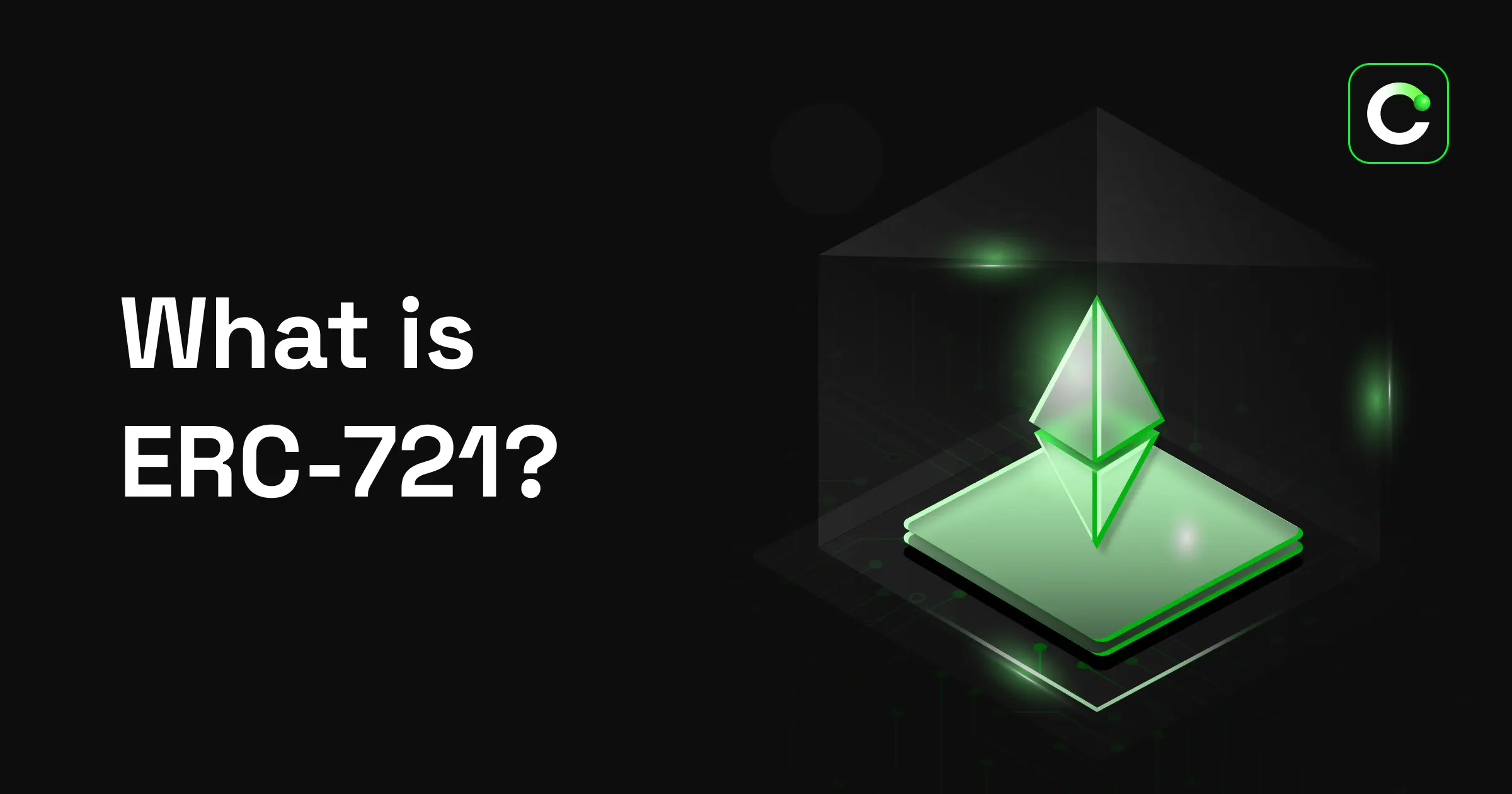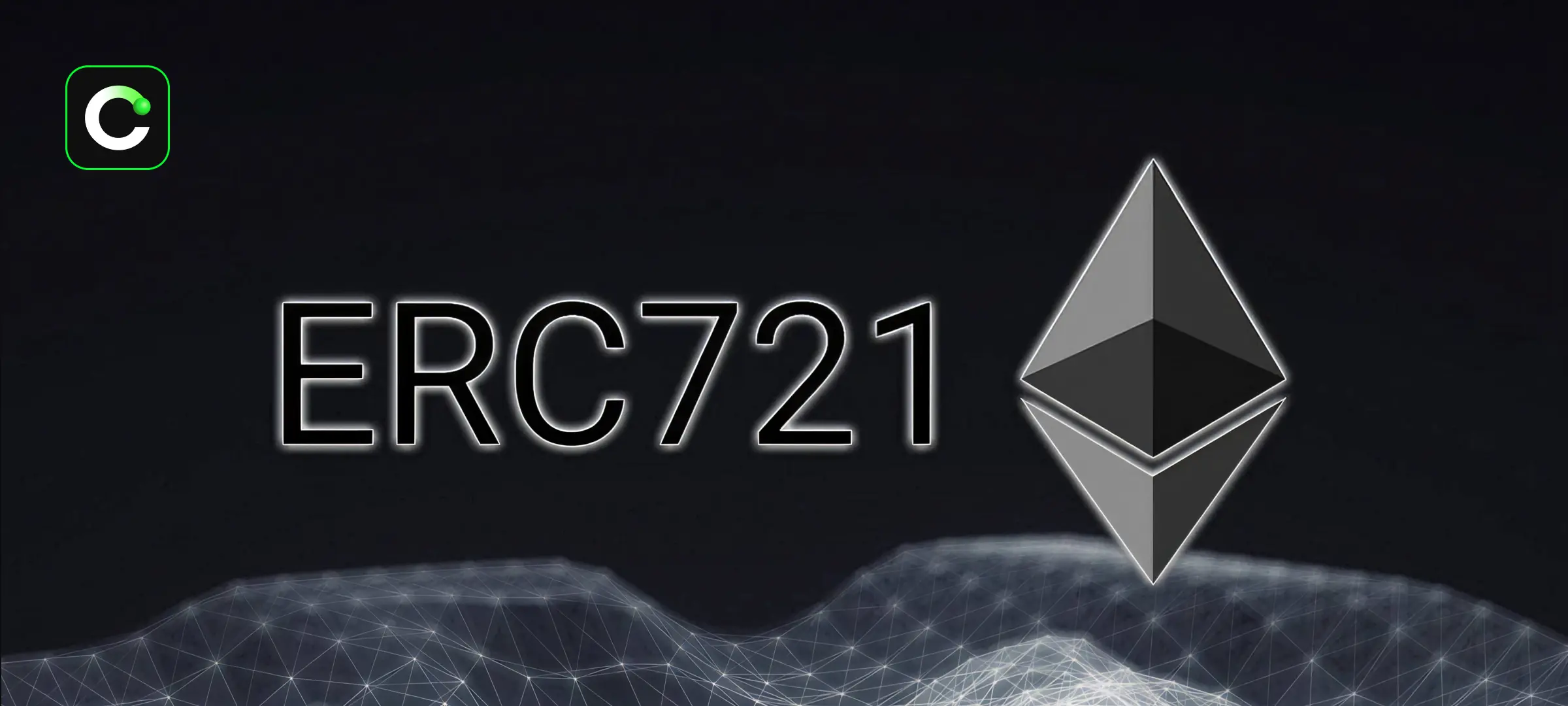What is ERC-721?

Cryptocurrency Exchange

ERC-721 is a token standard on the Ethereum blockchain that represents unique and non-fungible digital assets. Thanks to this standard, each token has a distinct identity and is separated from tokens that can be copied with the same value.
The most important feature of ERC-721 is that each asset carries a unique identity. In other words, one token cannot replace another. This provides reliable representation in areas such as digital artworks, collectibles, in-game assets, or identity data. Users can transfer ownership of these assets transparently and verifiably on the blockchain.
How Did the ERC-721 Standard Emerge?
The
ERC-721 standard was created in 2018 by Ethereum developers to address the need for securely storing and transferring unique assets.
Previously, the widely used ERC-20 standard was suitable for producing tokens with identical properties. However, it was not sufficient for representing assets such as digital artwork or a collectible card, where each one has its own distinct value. At this point, the Ethereum token standard came into play and laid the foundation of
NFTs (Non-Fungible Tokens). With this, the identity, ownership, and history of digital assets began to be securely recorded on the
blockchain.
How Does ERC-721 Work?
ERC-721 uses
smart contracts to assign each asset a unique identity number (token ID). This system ensures that each token is distinguishable from another.
Technically, the standard includes specific functions that regulate ownership and transfer processes. For example, “ownerOf” shows the owner of an asset, while “transferFrom” enables its transfer. When a user wants to send an asset securely, the “safeTransferFrom” function is used. During this process, it also automatically checks whether the recipient address can accept such assets.
For a simple example: imagine a digital sword in a game. When this sword is tokenized with ERC-721, its current owner, previous owners, and authenticity are recorded on the blockchain. As a result, it cannot be copied, it is protected against forgery, and it can be transferred safely among users.
What is the Difference Between ERC-721 and ERC-20?

The main difference between these two standards is that one represents unique assets, while the other represents tokens with identical features.
ERC-20 refers to “fungible” assets, meaning they are interchangeable. For example, 1 USDT is always the same as another 1 USDT. In contrast, assets created with the ERC-721 standard have a unique identity. A token representing a digital painting is not the same as another token representing a different painting. Therefore, it is non-fungible and suitable for collection purposes.
This distinction also defines their use cases. ERC-20 is mostly preferred in payment systems, staking, or
decentralized finance (DeFi) applications, while the non-fungible asset standard stands out in areas such as digital art, in-game items, or certificates that carry unique value.
Use Cases
Thanks to its unique feature, the standard has a wide range of applications across different industries. The most well-known examples include NFT artworks, in-game assets, collectible cards, and virtual real estate.
It can also be used in official processes such as identity verification, digital certificates, or property documents. For example, when a concert ticket is issued with this standard, each ticket has a unique identity. This eliminates the risk of forgery. Similarly, educational certificates can be securely stored and easily verified when needed.
Relation to NFTs
This standard forms the technical infrastructure of NFTs (Non-Fungible Tokens). NFTs are digital assets recorded on the blockchain as unique items, and it is this mechanism that makes them possible.
With the growth of the
NFT market, this standard has gained even more importance. The fact that digital artworks, collectibles, or in-game assets change hands for high values has been possible thanks to its reliability and verifiability features. Owners know that their assets are original and cannot be copied. This trust has increased the interest of both artists and users, contributing to the rapid growth of the ecosystem.
Legal Notice
The information, comments, and evaluations contained in this content do not constitute investment advice. This content is not intended to be prescriptive in any way and is intended to provide general information. It does not constitute investment advice. CoinTR cannot be held responsible for any transactions made based on this information or any losses that may arise.
Recommended
- Cryptocurrency ExchangeWhat is a Stablecoin? 2025 Stablecoin List The cryptocurrency market is known for its high volatility, posing significant risks for investors. Stablecoins provide a secure alternative by maintaining a stable value. Typically pegged to fiat currencies, precious metals, or other assets, stablecoins serve as a safe haven for investors and traders. But what is a stablecoin, how does it work, and what types exist? Let’s dive into the details. What is a Stablecoin? A stablecoin is a type of cryptocurrency designed to maintain a stable value,
2024-11-24
- Cryptocurrency ExchangeWhat are Bear and Bull Markets? In financial markets, the terms bear market and bull market are often used to describe overall trends. A bear market represents periods of declining prices, while a bull market refers to rising trends. These terms are particularly important in the cryptocurrency market. But what exactly is a bear market, what is a bull market, and how long do these periods last? Here’s a detailed guide. What is a Bear Market? A bear market is a period when asset prices experience a prolonged decline, typically
2024-11-24
- Cryptocurrency ExchangeWhat is Blockchain Technology? Blockchain is a digital ledger technology where data is stored on a distributed network without the need for central authority. As the backbone of cryptocurrencies such as Bitcoin, blockchain is now being used not only in the financial world but also across many different industries. Blocks record transactions, and each block is linked to the previous one, forming a chain. This structure makes data immutable, tamper-proof, and transparent. Key Features: Decentralization: Not controlled by a s
2024-11-28


